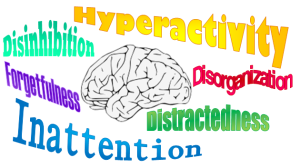by Thomas Armstrong, PHD – ICPA.org:
Over the past thirty years, attention deficit disorder (ADD), or attention deficit hyperactivity disorder (ADHD), has emerged from the relative obscurity of cognitive psychologists’ research laboratories to become the “disease du jour” of America’s schoolchildren. Accompanying this popularity has been a virtually complete acceptance of the validity of this “disorder” by scientists, physicians, psychologists, educators, parents, and others. On closer critical scrutiny, however, there is much to be troubled about concerning ADD/ADHD as a real medical diagnosis.
There is no definitive objective set of criteria to determine who has ADD/ADHD and who does not. Rather, there are a loose set of behaviors (hyperactivity, distractibility, and impulsivity) that combine in different ways to give rise to the “disorder.” These behaviors are highly context-dependent. A child may be hyperactive while seated at a desk doing a boring worksheet, but not necessarily while singing in a school musical. These behaviors are also very general in nature and give no clue as to their real origins. A child can be hyperactive because he’s bored, depressed, anxious, allergic to milk, creative, a hands-on learner, or has a difficult temperament, is stressed out, is driven by a media-mad culture, or any number of other possible causes.
The tests that have been used to determine if someone has ADD/ADHD are either artificially objective and remote from the lives of real children (in one test, a child is asked to press a button every time he sees a 1 followed by a 9 on a computer screen), or hopelessly subjective (many rating scales ask parents and teachers to score a child’s behavior on a scale from 1 to 5: these scores depend upon the subjective attitudes more than the actual behaviors of the children involved).
The treatments used for this supposed “disorder” are also problematic. Ritalin use is up 500% over the past six years. Yet, Ritalin does not cure the problem; it only masks symptoms. In addition, there are several disadvantages to Ritalin: children don’t like taking it, children use it as an “excuse” for their behavior (“I hit Ed because I forgot to take my pill.”), and there are some indications it may be related to later substance abuse of drugs like cocaine. Behavior modification programs used for kids labeled ADD/ADHD work, but they don’t help kids become better learners. In fact, they may interfere with the development of a child’s intrinsic love of learning (kids behave simply to get more rewards), they may frustrate some kids (when they don’t get expected rewards), and they can also impair creativity and stifle cooperation.
ADD/ADHD is a popular diagnosis because it serves as a tidy way to explain away the complexities of turn-of-the-millennium life in America. Over the past few decades, our families have broken up, respect for authority has eroded, mass media has created a “short-attention-span culture,” and stress levels have skyrocketed. When our children start to act out under the strain, it’s convenient to create a scientific-sounding term to label them with, an effective drug to stifle their “symptoms,” and a whole program of ADD/ADHD workbooks, videos, and instructional materials to use to fit them in a box that relieves parents and teachers of any worry that it might be due to their own failure (or the failure of the broader culture) to nurture or teach effectively. Mainly, the ADD/ADHD label is a tragic decoy that takes the focus off of where it’s needed most: the real life of each unique child. Instead of seeing each child for who he or she is (strengths, limitations, interests, temperaments, learning styles etc.) and addressing his or her specific needs, the child is reduced to an “ADD child,” where the potential to see the best in him or her is severely eroded (since ADD/ADHD puts all the emphasis on the deficits, not the strengths), and where the number of potential solutions to help them is highly limited to a few child-controlling interventions.
Instead of this deficit-based ADD/ADH paradigm, I’d like to suggest a wellness-based holistic paradigm that sees each child in terms of his or her ultimate worth, and addresses each child’s unique needs. To do this, we need to provide a wide range of options for parents or teachers.
Article originally posted at ICPA.org.



